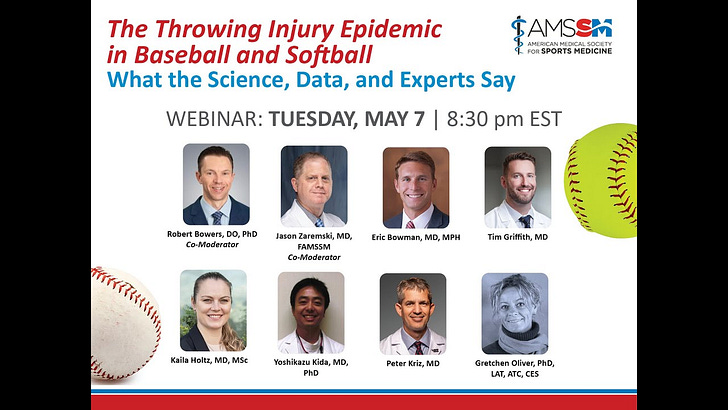There’s an uncomfortable truth running through every level of baseball right now. It’s not just that we’re losing pitchers - tearing ligaments, shredding shoulders, burning out elite arms in the name of performance. It’s that the people in charge have accepted it. From MLB owners to youth tournament directors to biomechanics gurus charging thousands per month, there’s no longer a serious conversation about how to prevent arm injuries. It’s now a question of how long you can last before it happens.
This is no longer a survival-of-the-fittest model. This is a meat grinder with a velvet rope. The line keeps moving forward and everyone knows what happens once you get inside. The elbow goes. The shoulder follows. Another 20-year-old disappears into rehab and returns 14 months later as a slightly diminished version of what they once were or doesn’t return at all. No one is outraged, because now, that’s just the way it is.
We passed the moral event horizon long ago.
There are moments in every society, in every culture, when an event should trigger massive, structural change. In America, we saw twenty elementary school children slaughtered in Sandy Hook and changed absolutely nothing about our approach to guns. That was the line. If that didn’t do it, nothing would. We’d decided that we were willing to tolerate a level of carnage so long as we could preserve the status quo.
Baseball’s moment is here, has been here, and will keep being here until someone stands up and says enough. Because a 30% injury rate for pitchers isn’t a crisis anymore. It’s a business model.
This isn’t hyperbole. At every level, from Little League to Major League Baseball, there are companies making money off of injuries. There are facilities promising to build 100-mile-per-hour arms. Others profit from fixing the same arms once they break. Some do both. No one is incentivized to solve this. Instead, they’re innovating around it. Workload management. Return-to-play timelines. “Safe” velocity gain programs. It’s performance wrapped around inevitability.
Meanwhile, injuries keep climbing. The cost of elbow injuries alone now runs into the hundreds of millions annually. Tommy John surgery is no longer a deterrent. It’s a career comma. Something you just pencil in between early promise and big-league payday. Teams are fine with it. They’ll draft a kid who just had the surgery because they know how to manage the rehab pipeline. College coaches don’t lose sleep over pitch counts because they know pro ball will clean it up later. Youth coaches chase trophies, not long-term health.
Everyone has normalized this billion dollar bleed.
(In the video above, the first pitcher you see? Drafted by the Yankees, now on the IL after Tommy John. The third? Made the majors, hasn’t pitched this year due to injuries. Should I go on?)
Here’s the most perverse part: it’s easy to not care. The kids coming up? They don’t care because the math checks out. If you can touch 100, even if you blow out at 21, you still might get paid. One contract. One flash of potential. That’s enough. For every pitcher who flames out in A-ball, there’s another high school junior lining up to take his place, eager to risk his future for a shot at now.
It would be understandable if we hadn’t learned anything, but we have. There’s been incredible work done. Smart biomechanists. Thoughtful strength coaches. Coaches who actually know how to build durability, not just gas, but the system doesn’t want it. Building durable arms takes time, patience, and a cultural shift that MLB has proven again and again it doesn’t have the stomach for. The league wants performance. The fans want velocity. The agents want paydays. The players? They want to make it before their bodies fail, but are perfectly willing to accept that risk.
We are stuck in a cycle of false progress. There’s no appetite for change because no one feels the pain. Not really. Teams write off injured pitchers like depreciation. Fans move on to the next prospect. Players rehab, pray, and throw harder next time. Pitching is a fungible resource now, even the stars, not an investment to protect.
It doesn’t have to be this way. There are better ways to train. Smarter ways to monitor. Systems that reward development over destruction. None of it will matter until someone with power decides that health is the goal, not just performance until the tendon snaps.
Until then, the mound is just a countdown clock and everyone involved is just watching the seconds tick down.
Not with horror, but with acceptance.





Will, you are so right! The problem is coaches, analysts, and movement specialists are looking at the isolated joint. Studies that have been presented have interesting information but do not apply when assessing chain reaction biomechanics. The data from my study for the last 10 years drives home reproducible information that is not being addressed by these professionals.
When I spoke at the American Baseball Coaches Association conference this past January, I had four analysts, pitching directors from MLB clubs that said they never thought about it this way. Two of these people represented two of the ball clubs with the highest incidence of UCL injuries. MLB clubs need to not be territorial and open their minds to understanding the chain reaction of movement and learn the impact upon the elbow and collaborate. They will save arms, money, and ultimately careers. If anyone from Little League to Major Leagues wants to discuss this, give them my information. My passion and mission these days is to share information to save the athletic elbow.